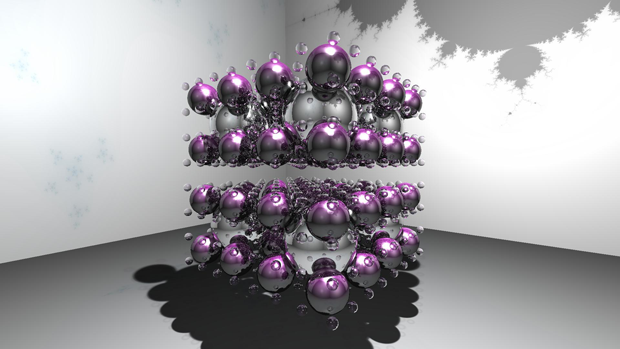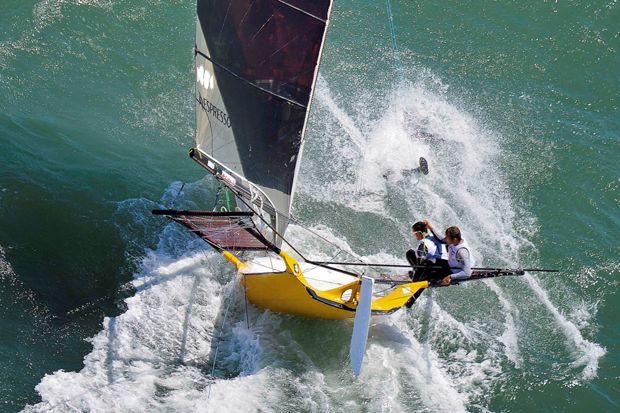 CUDA Spotlight: The Favreau BrothersBy Calisa Cole, posted Oct. 16, 2013  This week's Spotlight is on Cyrille Favreau and Christophe Favreau, brothers who leverage GPU computing in different ways, with equally compelling results. Cyrille, a technical architect by day, uses CUDA in his free time to pursue his interest in visualization technologies. His projects include building a real-time ray-tracing engine and molecule visualizer, and exploring fractal theory. Christophe, a professional photographer and videographer, is passionate about sailing and nature. GPUs help him produce beautiful work as he travels the world. This interview is part of the CUDA Spotlight Series. Q & ANVIDIA: Cyrille, let's start with you. When did you first start using GPUs? NVIDIA: How have you used CUDA to pursue your passion for visualization projects?
NVIDIA: Tell us more about SoL-R. In ray-tracing, recursion is key. In the current implementation of the SoL-R engine, parallelism is done at the pixel level. With dynamic parallelism, I am hoping to take parallelism down to the ray level. I expect this new design to increase GPU occupancy and improve scalability. Dynamic parallelism also efficiently helps in the building of acceleration structures. By sub-dividing the 3D space into smaller volumes (bounding boxes), the number of costly ray-object intersections computed by each ray can be dramatically decreased. NVIDIA: What advice would you like to share with other developers? GeForce and Tesla devices have different approaches in terms of core speed and numbers, and the NVIDIA Visual Profiler is an extremely powerful tool to validate that my algorithms are suitable for both types of cards. Back in the early days of CUDA, debugging on the GPU was not possible. The arrival of NVIDIA Nsight, and the ability to debug on a single GPU dramatically speeds up development time and makes it easier to adopt the technology. One of the challenges of designing real-time programs is to maintain a compromise between data structure simplicity and performance. For example, SoL-R uses memory indices extensively, and as the code develops and the algorithms become more complex this can be a source of invalid memory accesses (the SoL-R main kernel is ~3,000 lines of code). The CUDA Memory Checker makes it much easier to identify these bugs. My experience as a technical architect has taught me that the ease with which a library can be integrated into an existing project is sometimes as important as the features the library offers. For this reason, the SoL-R engine implements a subset of the OpenGL API, making it easy to switch instantly from rasterization to ray-tracing. Still, a number of OpenGL features are used behind the scenes through the OpenGL-CUDA interop. In short, CUDA provides a coherent set of features which work together as a whole to get the best out of GPUs. NVIDIA: Christophe, tell us about your photography business. As a freelancer, I have to be efficient in every step of production, from capturing the action on the water to the distribution of media. I also have to continually stay up to date with new technology, and choose the best and most comprehensive tools, from cameras and lenses to computer software and hardware. In terms of equipment, I use the latest professional camera from Nikon, the Nikon D4. When taking photos in the water, I use a Liquid Eye waterproof system with a Nikon D300S. NVIDIA: How do GPUs help you produce great photos? Since I work with very high definition images, I need significant computing power. For many years, interactivity was not even thinkable, but today I can pan, zoom, rotate, and apply filters on very large files on a laptop that I can take everywhere. I am currently using Photoshop CS5 on a Windows laptop equipped with an NVIDIA GeForce 650M. The user experience is amazing. When I am shooting a sailing event, as soon as the races are over I can transfer the pictures to my laptop and immediately rework them as necessary. And since my customers are still on site, this is clearly a huge commercial advantage.
NVIDIA: Do you also use GPU computing for videography? Now, thanks to GPUs and Adobe Premiere Pro 5.5, video editing has become a genuine pleasure. The ability to process high definition sequences interactively has brought me back to video editing. NVIDIA: Cyrille, what's next for you? Additionally, my website has become an incredible channel for me to connect with people who share my passion for visualization and high-performance computing. I plan to continue posting on my site to make it an interesting and valuable source of information. In recognition of Rob Farber’s famous Dr. Dobbs series, I created the LinkedIn group Supercomputing for the Masses. It now has more than 700 members! The purpose is to promote the use of GPUs in the IT industry. I'd like to see the group continue to grow and spark discussions. NVIDIA: Christophe, what's on the horizon for you? Bio for Cyrille FavreauCyrille's career has encompassed many different areas, from music to telecom to finance. He has always been fascinated by computer science, considering it an unlimited source of innovation, as well as a vector for sharing ideas and bringing people together. Cyrille is a musician, a dreamer, a husband, and enjoys foreign languages and cultures. In constant search of exciting experiences, he recently performed as a drummer at the Montreux Jazz Festival with the Canettes Blues Band. Cyrille received his B.S. degree in Computer Science in in 1993. Relevant Links Contact Info Bio for Christophe FavreauChristophe launched his career as a photographer after several years in journalism. Passionate about sailing and nature, he is now travelling the world capturing the beauty and excitement of marine sports. His passion for 18-foot Australian skiffs has allowed him to create a unique photographic portfolio of this amazing class of boats. He collaborates with magazines and agencies around the world and has been nominated for the Mirabaud Yacht Racing Image 2013 award. He has been a contributor to the Vendee Globe website and produces videos for online and television outlets. He holds a master's degree in sports sociology from Nantes University.Relevant Links Contact Info |

